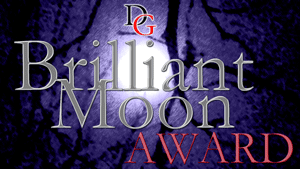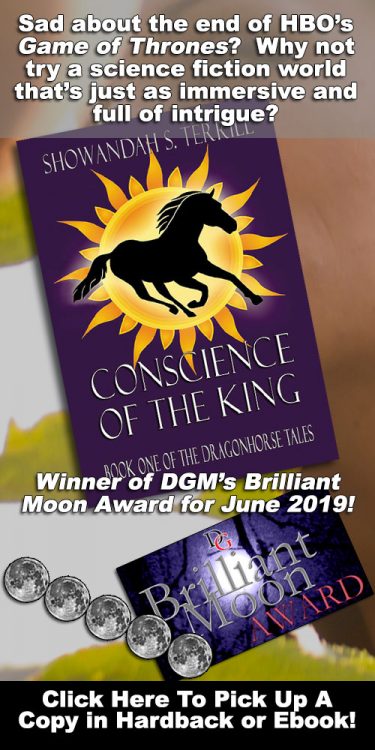 Author: James Luceno
Author: James Luceno
Publisher: Del Rey/Penguin Random House
Genre: Sci-Fi/Fantasy
Unique Elements: A prequel to the Star Wars anthology film: Rogue One
Series: Star Wars
Star Wars Timeframe: Starts before (and ends after) Episode III.
Release Date: November 15, 2016
Number of Page: 352 Pages
MSRP: $28.99 (HC); $35.99 (CD); $14.99 (Kindle)
Discount Link: Click Here
Website: Click Here
Video: Click Here (Rogue One Trailer that this story prequels)
Purchase Site: Click Here
Reviewed by: Jeremy T. Hanke
Final Score: 5 Moons (out of 5)
As the date draws near for the Star Wars anthology film, Rogue One, to be released, we in the fan community get a chance to do something we didn’t get to do prior to Star Wars: The Force Awakens – i.e. read a book that actually deals with the characters found in the movie that’s about to be released! (In fact, I personally believe there’s a tremendous possibility that if they’d releasing Claudia Gray’s incredible Bloodline novel in November 2015, rather than in May 2016, The Force Awakens would’ve made even MORE money during last year’s December release.)
Although this may seem like a no brainer on LucasFilm’s part to release directly connected literature before the release of a new film, this is actually more of a gamble than you might think. If folks don’t like the book, it could sour expectations on the film, and then fewer people go to watch it; on the other hand, if folks love the book, the movie might not be able to live up to their expectations, which could result in overly negative buzz because of it. (As the book is great, I can tell you I am a little nervous that the movie may not live up to what Luceno did here, but that’s not going to stop me from rushing out to see the movie as soon as I possibly can. And that’s kind of the point.)
While these risks might’ve been too great for an episodic film like The Force Awakens, the risks pale in comparison to not enough awareness for the first non-episodic, live-action Star Wars anthology film to ever be released. So, to paraphrase M. Night Shymalan’s exortations in Signs: “Swing away, Luceno. Swing away!”

Orson Krennic is a rising star within the Republic during the Clone Wars and, after stealing plans for a super battle station from the Separatists—knowing that a successful build could allow him to usurp Governor Tarkin, his military rival, in Senator Palpatine’s good graces— he decides the Republic needs to make one of their own. (Considering how often plans for massive space stations keep getting stolen in the Star Wars universe, am I the only one that’s wondering if perhaps all the major players in Star Wars are using the same firewall responsible for the Sony hacking scandal of 2015?)
Unfortunately, none of the Republic scientists can figure out how to make a truly devastating weapon for the massive battle station they’re constructing. (And, as we’ve learned from U.S. military tank development in our world, building a massive military object without a gigantic gun just makes you look stupid!)
However, when Krennic realizes that his old schoolmate, Galen Erso–who is now a cutting edge power scientist specializing in crystal technology–is exploring a means of harvesting incredible power yields from Kyber crystals (the same crystals the Jedi use to power their light sabers), he realizes he might just have the solution he’s looking for.
After orchestrating a brilliant jail break for Galen, his wife, Lyra, and their new daughter, Jyn, from a world seized by the Separatists, Krennic must now begin the insidious social engineering required to transform a passive objector scientist into a designer of the greatest weapon of mass destruction in the galaxy.
Story
Catalyst is the perfect title for this novel. One of the definitions of the word “catalyst” is “a thing that precipitates an event,” or, in the case of chemistry, “something that enables a dynamic reaction to occur.” Both parts of the definition are accurate in the case of this book and the Rogue One movie, because it both comes before AND enables the reaction that the upcoming film is based off of. (In addition to setting the stage, this book also gives you cool hints at things that have never been explained in Star Wars canon, such as alerting you to an anal retentive scientist who habitually includes minor errors in all of his work to prevent himself from becoming so perfectionistic he can’t move forward with his research, which could impact whether a certain exhaust port was covered or not in a certain set of blueprints.)
With that said, do not expect a highly physical or action based story in regards to this book. Instead, expect more of a political intrigue/suspense tale, that might be compared to a John Grisham novel in the Star Wars universe. After having read Claudia Gray’s Bloodline, which also did political intrigue quite well, I’m very excited for the future of Star Wars as it further combines space opera with political intrigue, without taking us to CSPAN-inspired senate hearings to do so (ala the prequels).
This novel has a clever conclusion that didn’t end how I was expecting it to, but still felt legitimate in its own right. The fact that Luceno could give this story the ending that he did makes me hopeful that Rogue One’s ending might different than the pundits are currently expecting.
Dynamics
As with other Luceno novels, this book is all about dynamics, as people play off of one another and attempt to manipulate each other for their own gain and desires. The key characters that are caught in interpersonal web of tension are Krennic/Galen, Lyra/Galen, Krennic/Lyra, and Krennic/Tarkin. (As James Luceno’s other Canon book in Star Wars is simply titled, Tarkin, and tells the story of Grand Moff Tarkin, it’s no surprise that he’s able to write this character quite effectively.)
In addition to these interpersonal dynamics, we have an interesting relationship between Galen and the Kyber crystals, which are referred to as “living crystals” and impact organic life forms in strange ways (sort of like how the various hues of kryptonite had different types of impact on Kryptonians in the Superman comics).
With that said, while most of the dynamics made complete sense and made you fully respect Krennic as a tactician, the failure of one critical machination early in the book by puppetmaster Krennic made me lose some respect for his problem solving ability or the true stealth of his brilliance. (And, in truth, this may have been Luceno’s goal, because we know that Krennic can’t survive into Episode IV, so he has to have some gaps in his perception or it would be hard to justify him not having replaced Grand Moff Tarkin by that time.)
Gothic Fit
The intrigue and calculation that overlays this story is very well within our wheelhouse as Goths, as is the very apparent dark side of people in places of power. It asks those hard questions of how do you get scientists who don’t want to kill to create something even more devastating than the atomic bomb?
The book also manages to preserve both a dark romanticism throughout it, as we see Galen’s desires are actually fairly romantically noble in aim, and it also preserves a spirituality that is a common core of Star Wars, with Lyra and her force sensitivity serving as a reminder of the noble Jedi even after they’ve been virtually exterminated. (Ironically, as this book deals with the import of Kyber crystals which would one day power the Death Star’s Laser, it becomes a question in my mind if the extermination of the Jedi was not just to prevent them from opposing the Empire, but, more importantly, to prevent them from being able to have any objection to the sacred Kyber being harvested en masse from their temples and holy worlds.)
Closing Thoughts
It’s probably safe to assume that, just like all Star Wars movies, you won’t HAVE to have read a book ahead of time to enjoy and understand Rogue One. However, if you’re the sort of person who likes catching all the inside jokes on things and likes to perceive at a level higher than the casual movie goer, then you will WANT to read Catalyst before you go to check out Rogue One! (And if you’re a slow reader and won’t have time to do that before the movie comes out, the audio book version of this is great, with Jonathan Davis doing the reading of it in wonderful style! It’s shocking how wide his range is!)
Story: 5.0 Moons (out of 5.0)
Dynamics: 5.0 Moons (out of 5.0)
Gothic Fit: 5.0 Moons (out of 5.0)
Final Score (not an average): 5.0 Moons (out of 5.0)
![]()

